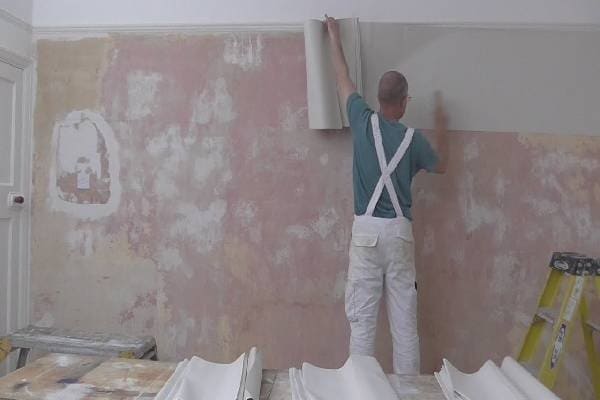Introduction
When it comes to home renovation or redecorating, plasterboard (or drywall) is a popular choice for creating smooth and seamless walls. Its ease of installation and finishing makes it a staple in modern construction. However, one question often arises: Can you paint straight onto plasterboard, or are there specific preparation steps required? In this article, we will explore the process of painting plasterboard, including preparation, application techniques, and tips for achieving a professional finish.
Understanding Plasterboard
Plasterboard, also known as drywall or gypsum board, is made of a core of gypsum plaster sandwiched between two layers of paper. It’s commonly used for creating interior walls and ceilings due to its affordability and versatility. Although it provides a smooth surface, plasterboard is porous and can absorb moisture, which affects how paint adheres to it.
Preparation for Painting Plasterboard
- Inspect and Repair: Before you start painting, inspect the plasterboard for any damage such as dents, holes, or cracks. Use a filler or joint compound to repair these imperfections. For small holes, a simple spackling paste will suffice, while larger repairs might require a joint compound.
- Sanding: Once the filler or compound has dried, sand the area smooth with fine-grit sandpaper. This ensures that the surface is even and free of rough spots, which helps the paint adhere better.
- Cleaning: Dust and debris can interfere with paint adhesion, so clean the plasterboard surface thoroughly. A damp cloth or sponge can be used to wipe down the surface. Allow it to dry completely before proceeding.
- Priming: One of the most critical steps in painting plasterboard is applying a primer. Primer helps seal the porous surface of the plasterboard, improves paint adhesion, and ensures an even finish. Use a high-quality drywall primer, which is specially formulated for this purpose. Apply the primer with a roller or brush, and allow it to dry as per the manufacturer’s instructions.
Choosing the Right Paint
- Type of Paint: For plasterboard, latex (water-based) paint is generally recommended due to its ease of application and clean-up. It also dries quickly and has less odor compared to oil-based paints.
- Finish: The finish of the paint—whether matte, eggshell, satin, or gloss—will affect the final look of your walls. Matte finishes can hide imperfections but may require more frequent touch-ups, while gloss finishes are more durable and easier to clean but can highlight surface flaws.
Painting Techniques
- Cutting In: Start by “cutting in” around the edges of the wall using a brush. This involves painting along the corners and edges where the roller cannot reach.
- Rolling: For the main wall areas, use a roller to apply paint. Roll the paint onto the wall in a ‘W’ pattern to ensure even coverage and avoid streaks. Be sure to overlap the painted sections to maintain a consistent finish.
- Drying and Second Coat: Allow the first coat of paint to dry completely before applying a second coat. Most paints require at least two coats to achieve full coverage and the desired color depth.
Tips for a Professional Finish
- Temperature and Humidity: Ensure that the room is well-ventilated and maintain an appropriate temperature and humidity level. Extreme temperatures or high humidity can affect the drying time and finish of the paint.
- Quality Tools: Invest in high-quality brushes and rollers. Cheap tools can leave streaks or fibers on the surface, compromising the finish.
- Avoiding Over-Painting: Apply the paint in thin layers rather than thick coats. Thick layers can lead to drips, uneven drying, and an unsightly finish.
Conclusion
Painting directly onto plasterboard is possible, but proper preparation is key to achieving a smooth and lasting finish. By addressing any surface imperfections, applying a suitable primer, and choosing the right paint and tools, you can transform your plasterboard walls into a beautifully painted surface. With careful preparation and application, your painted plasterboard walls will not only look great but also stand the test of time.

